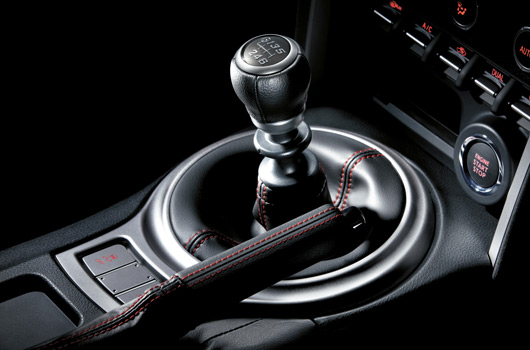It’s a fact of the modern automotive world that the manual gearbox is fast becoming the poor cousin of the double-clutch transmission.
Lamborghini has put a cross through the manual box and worse, the purist’s supercar—the Porsche 911 GT3—is available exclusively with PDK. The same is happening at the cheaper end of the market, too. Even the model name of the new Clio RS 200 EDC (efficient double clutch) tells us there’s no manual here.
The end is nigh.
Steve Sutcliffe from Autocar has taken a look into this phenomenon and found that, in the UK at least, the manual ‘box still lives large. A whopping 75% of all new cars sold in the UK last year was fitted with a “proper” transmission. Unsurprisingly, the US is in complete contrast with just 7% of new cars having a manual. We expect Australia is somewhere in the middle, with slushboxes and dual-clutch transmissions forming an overwhelming majority.
Autocar went to the manufacturers seeking answers and while mostly predictable, to do with gear change efficiency and fuel economy, here’s a couple of the more intriguing replies (use the source link below to check out the article in full)…
Ferrari chief of engineering, Roberto Fedeli: “Greater integration with all the vehicle’s other electronic control systems – E-diff, F1-Trac, high-performance ABS, magnetorheological suspension – allowed by the DCT has given us even more advantages, not least the ability to build a car that is supremely agile yet controllable on the limit, as well as being more frugal.”
Porsche head of GT car development, Andreas Preuninger: “The ‘simply add lightness’ philosophy to make a car faster, especially the past three GT3 generations, just does not apply any more. Nowadays, systems that add extra speed over-compensate their extra weight very clearly. Purism and performance are no longer inextricably linked. Indeed, they turn more and more into opposites today.
“It’s also vital to note that we built a 991 GT3 with a manual gearbox and ran it during development alongside prototypes with the PDK – and in all cases, both emotionally and empirically, the PDK came out on top. And that’s why we built the car this way.”
Whatever the future holds, we’ll always prefer changing gears by ourselves, no matter how much slower it might be.
[Source: Autocar]

5 replies on “Long live the manual gearbox!”
The UK is interesting with the number of manuals. Nearly all rental cars are manuals there. Loads of the diesel passenger cars are manual as well, which is virtually unheard of here.
I think here in oz our percentages would be closer to the US for passenger cars. Once you start talking utes and dual cabs etc, then there are lot more manuals.
Only the base SLK in the Merc passenger fleet comes in manual as far as I know, AMGs are all auto/Dual clutch and have been for many years, sad, I’d love my 5 y/o black series in a manual
I now personally know 2 people that have had DSGs go bad (and with relatively low k’s in each case too) and the cost of making them good again is genuinely shocking – you could buy new cars for the costs i’ve been told about. Even if the risk of them going bad is relatively low, the cost consequences generally mean that the average car buyer should steer clear of them in my view. That and the fact that they really do suck to drive aroud town – the real time predictive logic of a pair of eyes and a brain far exceeds anything engineers can program in advance especially when it comes to matching shift patterns with ever changing driver moods
Changing gears automatically is just the tip of the iceberg. In the not too distant future we will have to surrender all control….
http://smh.drive.com.au/motor-news/54-million-selfdriving-cars-by-2035-report-20140106-30d9x.html
Actually where are no where in the middle. We are much closer if not nearly the same as the US.
In Europe there are a few reasons why manuals are more widely chosen. 1) It’s a cultural thing, people there have grown up on and from a young age learn to drive stick whether your male or female. 2) Because of the tax structure, large capacity engines are taxed much higher than small capacity engines. It’s quite common to find most Europeans driving around in 1 or 1.2 and 1.3L cars. Auto’s just don’t cut it here so they will always chose a manual. 3)Fuel is well over $2.50 per litre in Europe so small capacity engines plus a more fuel efficient manual is always chosen.
I could go on and on, but if you haven;t lived in Europe for many years and in a few different countries there (helps having a European passport) then you just would not understand why manuals are always the preferred vehicles whether they are Taxis, rentals or Police cars. When Europeans first come here they think it strange we mostly only drive autos.
Also when Aussies go over to Europe for the first time they are amazed at how many Mercs are manual, something you rarely ever see here.